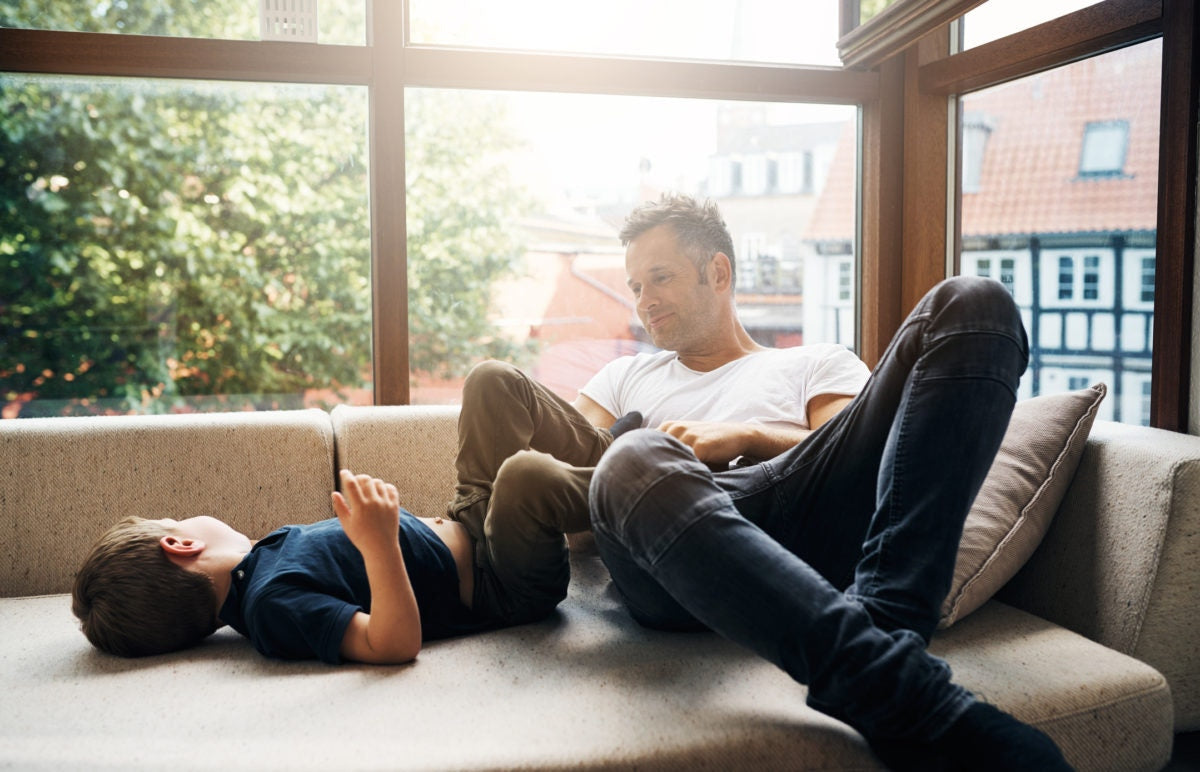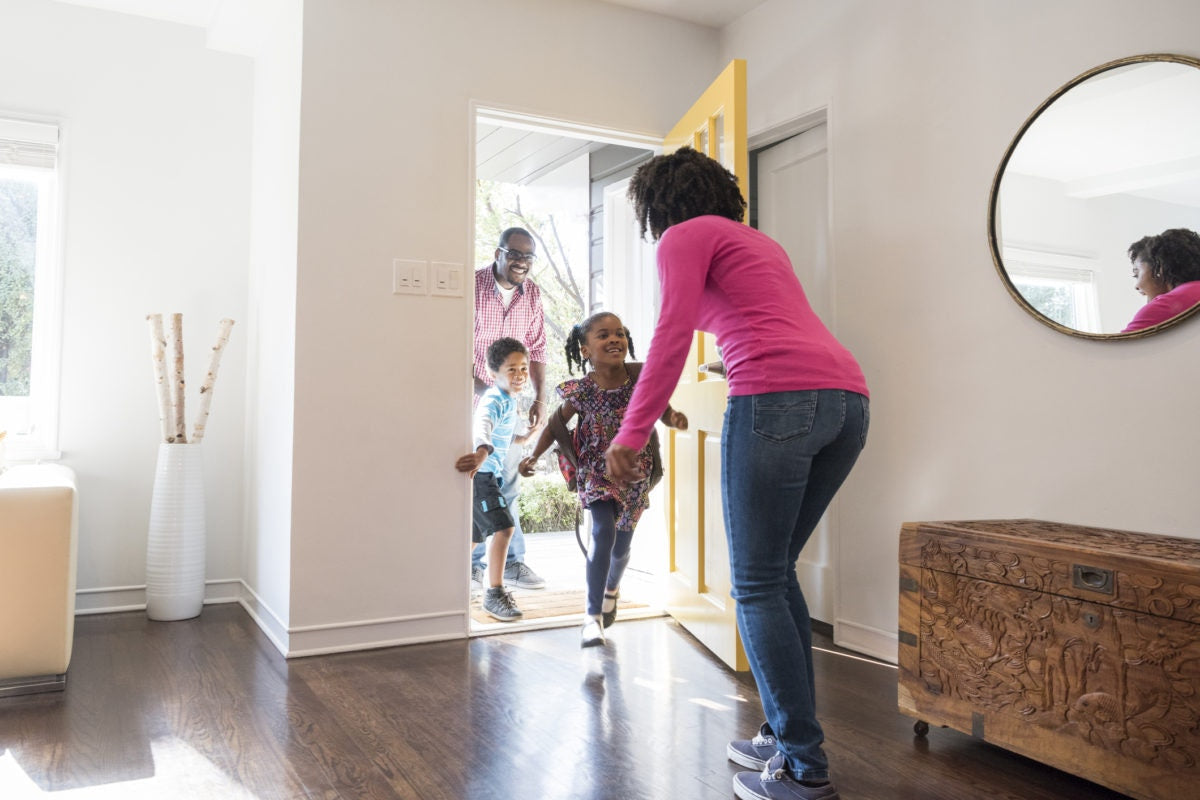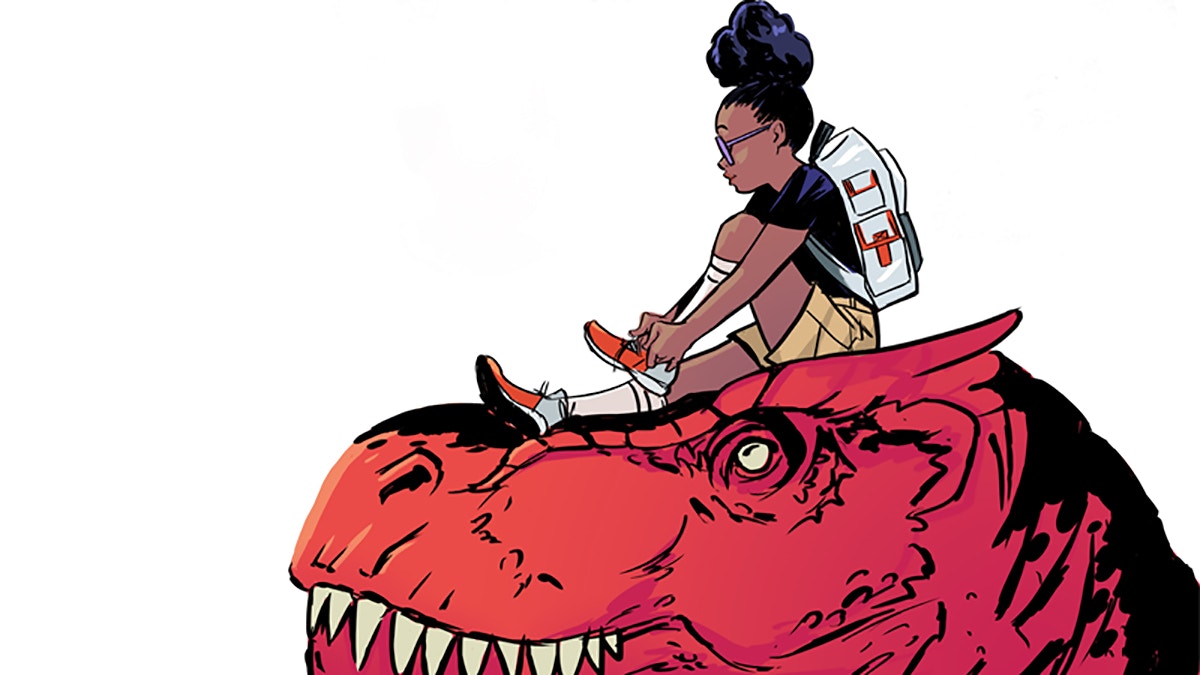The world can be a very stressful place for kids. From school to sports, stress plays a big role in how they live and learn. My own kids are driven, high achievers. That is a double-edged sword as they always go full tilt at everything they do but have a harder time with the inevitable failures. I am constantly looking to find ways to relieve their anxiety.
Your family room couch can become a figurative therapist’s couch with these simple tips on reducing stress and anxiety in your kids. However, if your child or spouse is experiencing anxiety, stress, or depression symptoms, do not hesitate to seek the attention of a medical doctor, psychiatrist, or licensed therapist.
1 | Tell me about your mother, and your day
Set aside time to just talk on the couch (or where ever you gather) together. The kids might enjoy doing the full therapist’s couch routine. Have them lie down and tell you about their day. Making time to discuss the week and how it affects you and the kids is a great start in opening up and reducing stress. Don’t go with the traditional therapist in a chair and kid on the couch set-up. Sit next to your kid. Make eye contact. Even 15 minutes of your undivided attention can work wonders on opening up communication. Don’t expect much more than a "Fine" if you ask ask, “How was your day?” Ask questions that focus on what they liked or didn’t like, or what was stressful or exciting about their day.
2 | Come to a HALT
Sometimes, the reason for anxiety or stress can be as simple needing a snack. Applying HALT (Hungry, Angry, Lonely, Tired) as questions can often solve the mystery of what is making your child anxious or stressed. Are they hungry? Angry? Do they want to be alone? Are they tired? My husband often jokes that he can tell when I’m need a snack and so tells me to HALT. Those four letters can encompass a lot of what is going on in a kid’s life. If you dig a little deeper into why they are feeling those emotions, the root of the problem often comes out.
Taking that idea a step further with distraction exercises can work to staunch conflicts or relieve stress. “Calm Down” bottles or a quick game of I Spy can stop the stressful or anxious behavior in its tracks. Another easy option is to put dried black and white beans into a mason jar. Then, have each child separate out one color of beans into their own mason jar. The tactile sensations (the feel and colors of the beans, the glass jar) and the distraction of the process can stop conflict in its tracks. Just be careful to use the glass jar on a carpeted low surface, unless you want dried beans and glass all over your floor.
3 | The therapy huddle
Sometimes you just need some group therapy in your house. Family can mean not only individual stress, but also the stresses of confrontation, sibling competition, and parental pressure. Sit everyone down together and talk through what's going on. In our house, an abrupt stop to whatever is going on (argument, slap fight) can help diffuse the situation. Use techniques that give everyone equal time to talk. Some options include a brainstorming session, passing the peace feather (or whatever you can find), or limiting talk time or sentence length. Giving each family member time to express their feelings and thoughts can help relieve the stress of the day.
4 | Book it into therapy
Bibliotherapy is another way parents can use the couch to encourage kids and reduce stress. Simply choose a book with a main character(s) that your child can relate to. Has your child recently lost a pet? "Old Yeller" or "Where the Red Fern Grows" can start conversations. A child that is an academic high achiever or identified as gifted might learn from the book "Matilda." A child struggling with dyslexia might identify with the story of Percy Jackson and even more so when they realize that Riordan’s son own was dyslexic. Discuss how a fictional character works through her strengths and failures and how that can apply to your child’s personal stressors.
5 | Meditate away the stress
The health and stress-relieving benefits of meditation are proven in many studies. While we attended a family yoga class when our schedules worked, you can’t always stop and do yoga in between school and soccer. Choosing one simple yoga move to stop stress or anxiety in its tracks can be helpful; Child’s Pose or Downward Dog are good options to integrate. Another option we use in our house is to have our kids imagine invisible “tai chi balls” in their heads, and then concentrate on keeping those invisible balls in the air.
6 | Share your own stress
Kids may think that their stress is the only stress as they move through overwhelming times. Letting them know that you have stress at work or at home can help them identify with you as well. Be careful to share within reason, you don’t want them to stress about your stress too.
By applying these simple home-therapy options, you can calm down some of the inevitable stress and anxiety in your household.



